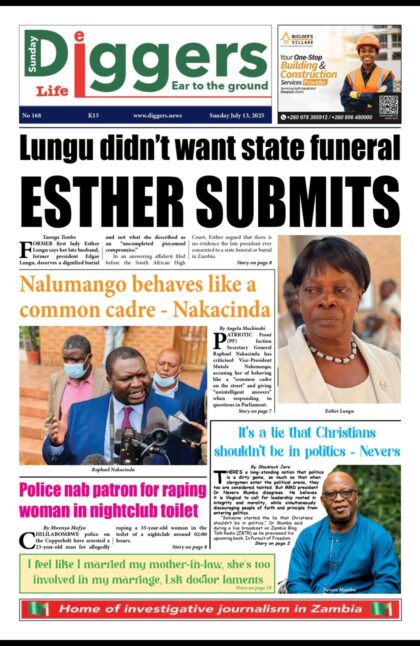Zambia has been experiencing adverse impacts of climate change – including an increase in frequency and severity of seasonal droughts, occasional dry spells, increased temperatures in valleys, flash floods and changes in the growing season. In response to these impacts, Zambia is working to develop sustainable and appropriate programmes for both crops and livestock in the face of climate change.
The media has since been identified as a key partner in spreading climate change awareness, and News Diggers in partnership with WAN-IFRA, is running a series of articles and programmes on radio and television, aimed at highlighting, not only the impact, but also interventions as well as responses from the government and international partners.
It is imperative for our readers, especially those who are unfamiliar with Zambia to understand the country’s profile, as it relates to climate, habitats and livelihoods.
Climate: Zambia has what is described as Tropical climate. Science tells us that this type of climate is characterised by predictable temperature patterns with modest seasonal variation and precipitation regimes that are, to the contrary, much more unpredictable and highly variable from year to year. Daily temperature range (on a sunny day) is far greater than the seasonal variation between the warmest and coldest months. Seasonal differences are usually determined by rainfall patterns, such that the dry season is called “summer” and the wet season is “winter.” In Zambia, as modified by altitude; the rainy season is supposed to be between October and April, but citizens can’t recall when they last saw rain drops in the month October. Thanks to climate Change, Zambia is yet to see a consistent downpour in major parts of the country, and this is January. Climate Change is definitely at play.
Watch the video documentary on the destruction of Forest Reserve number 27 at the hands of the political elites.
To help those who find this development too complicated to follow; we will give a simplified summary of events. During president Rupiah Banda’s regime, government encroached on a forest reserve, east of Lusaka, which is a source of the Chalimbana River.
Mr Rupiah Banda’s regime changed this land use and gave it back to the Ministry of Defence without a de-gazetting process, before it was turned into residential land for the Zambia Air Force staff.
Under president Michael Sata, the staff houses were completed and the Chinese contractors handed the base to then Defence Minister Geoffrey Bwalya Mwamba, but it was not without controversy.
A community in Chongwe called the Chalimbana River Headwaters Conservation Trust challenged the development, arguing that the military base was contaminating the forest reserve, which is the source of drinking water for the villages, east of the Capital City. So, they sought intervention from the Zambia Environmental Management Authority, the Head of State, and the courts of law. But their plea fell on deaf ears.



















